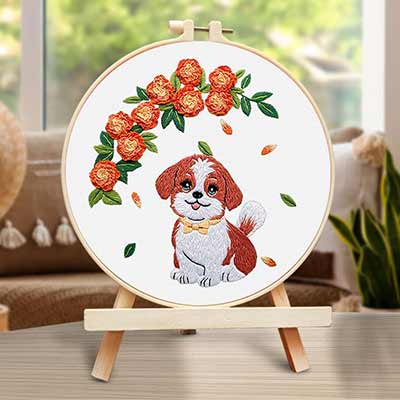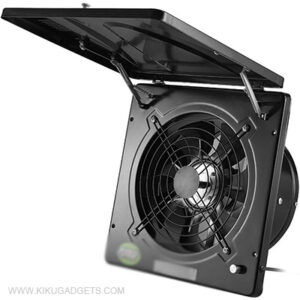
Beginner Embroidery Patterns – Embroidery Beginners Include Techniques, Hand Embroidery for Beginners, Embroidery for Beginners Kit, Embroidery Stitches for Beginners
Embroidery is an age-old craft that continues to captivate creative minds. For newcomers, diving into the world of needlework can feel both exciting and overwhelming. The good news? With the right beginner embroidery patterns, tools, and techniques, anyone can master this calming and creative art form.
In this article, we’ll guide you through essential embroidery tips, common embroidery stitches for beginners, choosing the best embroidery for beginners kit, and everything else you need to know to start stitching with confidence.
Why Start with Beginner Embroidery Patterns?
Whether you’re interested in personalizing your clothing, creating handmade gifts, or just looking for a relaxing hobby, embroidery is an accessible and rewarding skill. Beginner embroidery patterns are specifically designed to be simple and easy to follow, helping you build your stitching confidence and learn the basics without frustration.
Many patterns feature floral motifs, geometric shapes, or cute animals that allow new stitchers to practice a variety of techniques while working on beautiful, functional projects.
Essential Hand Embroidery Techniques for Beginners
To get started with hand embroidery, it’s important to understand a few basic techniques. Here are some foundational tips every beginner should know:
1. Hooping Your Fabric
Always start by securing your fabric in an embroidery hoop. This keeps the fabric taut and makes it easier to create even stitches. Choose a wooden or plastic hoop that fits the size of your project.
2. Transferring the Pattern
Patterns can be traced onto fabric using a water-soluble pen, carbon transfer paper, or iron-on transfers. Some embroidery for beginners kits come with pre-printed fabric, making this step even easier.
3. Threading the Needle
Cut a piece of embroidery floss (about 18–20 inches), separate the number of strands needed (typically 2–3 for beginners), and thread your needle. Tie a small knot at the end.
4. Starting and Finishing Your Stitches
Start your embroidery from the back of the fabric and pull the needle through to the front. Always secure the ends of your thread with a knot or by weaving it through the back of stitches to prevent unraveling.
Best Embroidery Stitches for Beginners
When starting out, it’s important to focus on a few easy embroidery stitches. Here are five beginner-friendly stitches that form the foundation of many patterns:
1. Running Stitch
This is the simplest embroidery stitch. Just weave your needle in and out of the fabric at even intervals. It’s ideal for outlines and borders.
2. Back Stitch
This creates a continuous line, perfect for outlining shapes and adding detail. After the first stitch, bring the needle back up ahead of the last stitch and insert it back at the end of the previous stitch.
3. Satin Stitch
Use the satin stitch to fill in shapes with a solid block of color. This involves stitching back and forth across a shape, keeping the stitches close and smooth.
4. French Knot
French knots add texture and dimension. Wrap the thread around the needle once or twice and insert it near the original exit point, pulling tight to create a small knot.
5. Lazy Daisy (Detached Chain Stitch)
Ideal for creating petals and leaves, the lazy daisy is formed by looping the thread and anchoring it with a small stitch.
Practicing these stitches will build your confidence and enable you to take on more complex patterns in the future.
Choosing the Right Embroidery for Beginners Kit
If you’re just starting out, an embroidery for beginners kit can make the process much smoother. These kits typically include:
- Embroidery hoop(s)
- Cotton fabric or linen
- Embroidery floss in various colors
- Embroidery needles
- Printed or iron-on patterns
- Beginner instruction booklet
Look for kits labeled “beginner-friendly” or “starter kit,” as they include simple designs and comprehensive guides. Some even offer video tutorials or QR code links for additional support.
Popular themes for beginner kits include:
- Floral wreaths
- Cute animals
- Inspirational quotes
- Nature scenes
A good kit can save time, reduce frustration, and help you complete your first project successfully.
Tips for Practicing and Improving Your Skills
- Start Small: Choose small patterns so you can finish them quickly and feel accomplished.
- Use Quality Materials: Good floss, sharp needles, and tightly-woven fabric make embroidery more enjoyable.
- Be Patient: Don’t worry about perfection. Every stitch improves your skills.
- Watch Tutorials: YouTube and Pinterest are gold mines for visual learners.
- Join a Community: Online embroidery groups offer support, advice, and inspiration.
Simple Beginner Embroidery Pattern Ideas
Not sure what to stitch first? Here are a few easy and fun beginner embroidery pattern ideas to get you going:
- Mini Floral Hoops: Practice your lazy daisy and satin stitch.
- Quote Hoop Art: Use a backstitch to stitch a favorite saying.
- Cute Animals: Great for practicing multiple stitches in one design.
- Simple Borders or Frames: Running and back stitches help build consistency.
All of these ideas can be found in most beginner embroidery kits or free online templates.
The Therapeutic Benefits of Hand Embroidery for Beginners
Embroidery isn’t just about creating art, it’s also deeply relaxing. Many beginners find that stitching helps reduce stress and improve focus. The repetitive motion, the quiet concentration, and the satisfaction of seeing a design come to life make embroidery an ideal mindful hobby.
Some benefits include:
- Improved hand-eye coordination
- Enhanced creativity
- Reduced screen time
- A sense of accomplishment
- An outlet for self-expression
Even just 15–30 minutes of stitching a day can have a positive impact on your mood and well-being.
Conclusion
Starting your embroidery journey doesn’t have to be intimidating. With easy-to-follow beginner embroidery patterns, a supportive embroidery for beginners kit, and a few essential stitches, you’ll be well on your way to crafting beautiful handmade creations. Whether you’re interested in hand embroidery for beginners for fun, relaxation, or artistic expression, there’s a world of creativity waiting at the end of your needle.
So grab your hoop, thread your needle, and start stitching today!
- Beginner embroidery patterns
- Embroidery beginners include techniques
- Hand embroidery for beginners
- Embroidery for beginners kit
- Embroidery stitches for beginners

